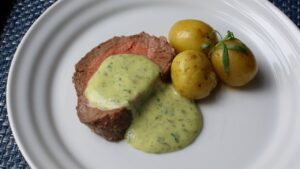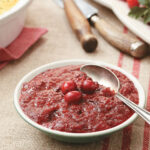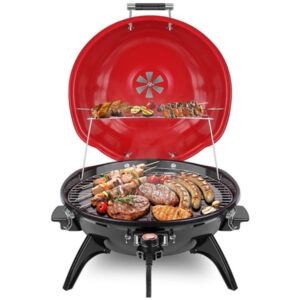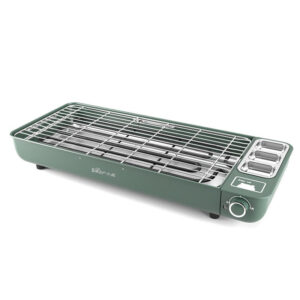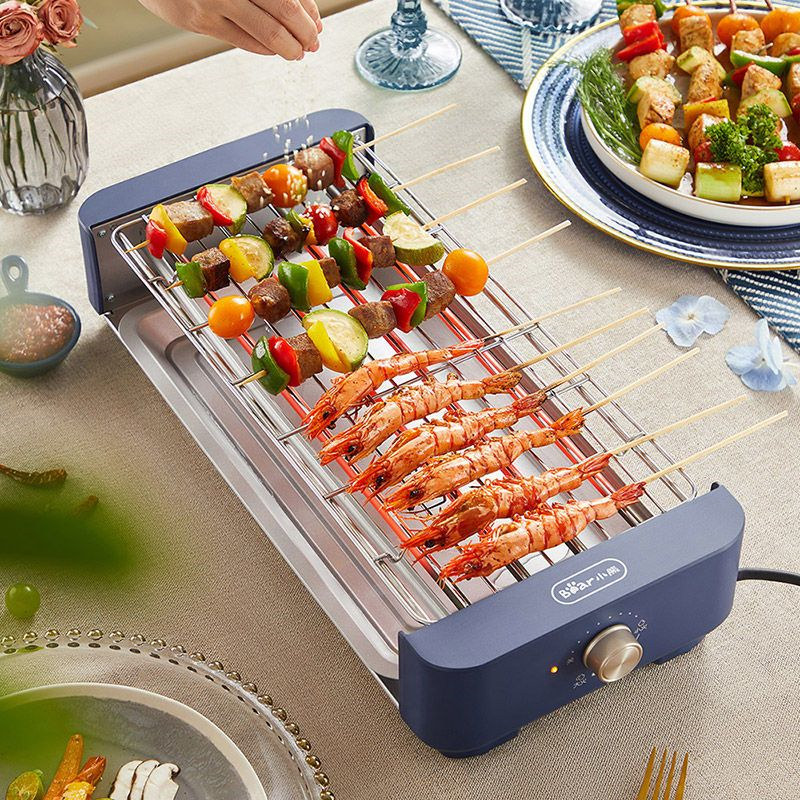“At first, I was skeptical, but Coffee Ancho BBQ Rub took the taste of my ribeye steak to a whole new level. It’s now a family favorite!” – Sarah M.
Introduction
When it comes to elevating the flavor of beef BBQ, you need a secret weapon in your culinary arsenal – Coffee Ancho BBQ Rub.
What is Coffee Ancho BBQ Rub?
Coffee Ancho Rub is a harmonious fusion of ground coffee beans and ancho chili powder, creating a seasoning blend with smoky, spicy, and slightly sweet flavors. Its flavor is both bold and intriguing, making it the perfect companion for beef.
You might be skeptical about how coffee can go hand in hand with chili powder.
Don’t worry; we will now explore the fascinating world of Coffee Ancho BBQ Rub and its ability to turn beef into a mouthwatering masterpiece.
The Origins of Coffee Ancho BBQ Rub
The history and cultural roots add depth to its intriguing flavor
The roots of Coffee Ancho Rub trace back to the heart of Mexican cuisine. Ancho chili peppers are one of the key components of this BBQ RUB, and they are a staple ingredient in Mexican cooking. These peppers are dried poblano peppers, known for their smoky, fruity, and mildly spicy flavor.
The use of chili peppers in Mexican cuisine dates back to the pre-Columbian era when indigenous people cultivated and incorporated them into their daily meals. Ancho chili, with its slightly smoky and fruity notes, has played a significant role in Mexican culinary traditions, adding depth and complexity to dishes.
Now, let’s talk about the other star of this Coffee Ancho BBQ Rub, coffee. Coffee is primarily associated with morning wake-up calls, and the idea of pairing it with chili powder might seem unusual. However, this combination has stood the test of time.
The smoky, earthy notes of coffee beans provide a harmonious contrast to the spiciness of ancho chili powder. The result is a seasoning blend that tantalizes the taste buds with a balance of heat, bitterness, and a hint of sweetness.
So, while the pairing of chili powder with beef makes sense, why does ground coffee work so well? This brings us to the similarities between the process of roasting coffee beans and grilling beef.
We know that coffee beans generally require roasting to achieve their desired flavor profile. During roasting, temperatures often exceed 150 degrees Celsius, which imparts new aromas to the coffee beans, such as caramel and chocolate. This is known as the Maillard reaction, which also gives the coffee beans their brown color. Interestingly, when grilling beef, the meat undergoes a similar Maillard reaction, producing the distinctive aroma of beef and those grill marks. So, while these two ingredients might seem unrelated at first glance, they actually complement each other by enhancing the aroma.
Over time, the combination of coffee and ancho chili powder gained popularity not only in Mexico but across borders. As the world became more connected through travel and trade, Coffee Ancho Rub found its way onto grills and into kitchens worldwide. Its adaptability and ability to enhance a wide range of dishes made it a cherished secret ingredient for culinary artists and BBQ aficionados.
Today, Coffee Ancho Rub has transcended its cultural origins, becoming a versatile and cherished seasoning in kitchens across continents. Its journey from the heart of Mexican cuisine to global recognition exemplifies the beauty of culinary fusion and the enduring appeal of flavors that transcend borders.
Making Your Coffee Ancho BBQ Rub
After the introduction and exploration of the origins of Coffee Ancho BBQ Rub, you’re likely eager to create this delicious BBQ rub yourself. The process is straightforward, and all you need to do is combine the following ingredients in a mixing bowl, thoroughly mixing them:
- 2 tablespoons of coffee grounds
- 2 tablespoons of brown sugar
- 1 tablespoon of Ancho chili powder
- 1 tablespoon of Paprika powder
- 1 tablespoon of coarse salt
- 1 teaspoon of black pepper
- 1 teaspoon of garlic powder
Some coffee enthusiasts may wonder, what type of coffee grounds should you use for Coffee Ancho BBQ Rub?
When making Coffee Ancho Rub, you can use various types of coffee grounds depending on your flavor preferences and availability. Here are some common coffee grounds choices, each of which will bring a unique flavor to your Coffee Ancho Rub:
Espresso Coffee Powder: If you enjoy a rich coffee flavor, you can choose espresso coffee powder. This powder is extracted from specially brewed espresso coffee and typically has a strong coffee aroma and bitterness.
Medium Roast Coffee Powder: Medium roast coffee powder usually offers a balanced flavor, falling between dark roast and light roast. They may have nutty, chocolatey, and slight acidity, adding complexity to Coffee Ancho Rub.
Dark Roast Coffee Powder: If you want Coffee Ancho Rub to have a richer smokiness and caramel flavor, you can opt for dark roast coffee powder. This powder often comes with a dark, robust coffee flavor.
Instant Coffee Powder: Instant coffee powder is a convenient option and is usually easy to mix and use. The flavor can vary depending on the brand and type, but if you use instant coffee powder, it’s best to choose unsweetened varieties. This is because it’s challenging to control the sugar content in sweetened instant coffee powders, and if you prefer a less sweet flavor, sweetened instant coffee powder may not be the best choice.
Specialty Coffee Powder: If you have the opportunity to obtain specialty or single-origin coffee grounds, this can bring a unique flavor to Coffee Ancho Rub. Specialty coffees often have distinct regional flavor profiles, such as fruity, floral, or chocolatey notes.
Regardless of which coffee grounds you choose, you can adjust the amount of coffee in your Coffee Ancho Rub according to your personal taste. You can start with a smaller amount of coffee grounds and gradually increase it to ensure it reaches your desired flavor intensity. The choice of coffee grounds will result in different flavors in the final Coffee Ancho Rub, so feel free to explore and find the coffee grounds type that best suits your taste.
Brown sugar is used in Coffee Ancho Rub because it contains some residual molasses and syrup, which impart depth and complexity of flavor. This makes brown sugar richer in sweetness and has a slight caramel flavor compared to white granulated sugar. This flavor complements the taste of coffee and ancho chili powder, providing Coffee Ancho Rub with a more robust and enjoyable flavor. On the other hand, the darker color of brown sugar contributes to a beautiful caramelized appearance when grilling meat, enhancing the visual appeal of your barbecue.
Of course, if you don’t have brown sugar, you can use white granulated sugar as a substitute. However, is there another way to elevate the flavor further? If you enjoy a fresh tropical flavor, consider using palm sugar instead of brown sugar. Palm sugar is slightly lighter in color than brown sugar, but it offers a sweetness level similar to brown sugar and has a subtle coconut flavor. If you appreciate the tropical taste of coconut, palm sugar is an excellent choice.
In Coffee Ancho Rub, both ancho chili powder and paprika play important roles in bringing unique flavors and complexity to this seasoning blend.
Ancho chili powder is made from dried poblano peppers and has a rich, smoky, fruity, and mildly spicy flavor. This adds depth and complexity to Coffee Ancho Rub. Paprika contributes some mild sweetness and helps balance the spiciness in the seasoning blend.
If you don’t have ancho chili powder, you can consider using some other chili powders or spices as substitutes and gradually adjust to your taste preferences. Here are some possible alternatives:
Regular Chili Powder: Regular chili powder is typically a blend of different chili varieties, so it may offer a complex flavor profile. Choose a mild regular chili powder initially, then gradually add more to avoid making the dish overly spicy.
Cayenne Pepper: Cayenne pepper is very spicy, so use it with caution as a substitute. Add it gradually to ensure the dish doesn’t become too spicy.
Chili Powder Blend: Some chili powder blends may include chili powder, sweet pepper powder, and other spices, which can add layers of flavor to Coffee Ancho Rub.
Remember that when substituting spices, always start with a small amount and gradually increase it to suit your taste. Different chili varieties have varying levels of spiciness and flavor characteristics, so you can choose the substitute that best suits your preferences.
After mixing, your Coffee Ancho BBQ Rub is ready to transform your beef into culinary masterpieces.
Pairing Suggestions
What beverages and side dishes can complement the meat with bold flavors of Coffee Ancho Rub?
Pairing Coffee Ancho BBQ Rub-seasoned beef with the right side dishes can elevate your dining experience to new heights.
Beverage Pairing
Red Wine: For those who enjoy a good glass of wine, Malbec, Cabernet Sauvignon, or Syrah are excellent companions for Coffee Ancho BBQ Rub-seasoned beef. The tannins in red wine complement the richness of the meat and harmonize with the wine’s smoky and spicy notes.
Craft Beer: If you prefer beer, consider slightly bitter craft beers. IPAs (India Pale Ales) or robust dark beers can provide a refreshing contrast to the smokiness of the rub.
Coffee: To enhance the coffee flavor in the BBQ Rub, pair your seasoned beef with a strong dark roast coffee. The robust earthiness of coffee complements the bitterness of the rub, creating a delightful synergy.
Iced Tea: For a non-alcoholic option, a glass of iced tea with lemon or mint can provide a refreshing contrast to the spiciness and smokiness of the dish. The cool, crisp tea can cleanse the palate.
Side Dish Companions
Coleslaw: Creamy coleslaw with its cool texture contrasts delightfully with the smokiness and spiciness of the beef. The acidity in coleslaw dressing complements the richness of the meat.
Baked Beans: Baked beans are a classic barbecue side dish, offering a combination of sweetness and saltiness that pairs well with Coffee Ancho BBQ Rub-seasoned beef. Tender beans with a delicious sauce add depth to your barbecue feast.
Grilled Vegetables: Fire up the grill and char a colorful array of grilled vegetables. Grilled bell peppers, zucchini, and asparagus provide a fresh and smoky balance to the richness of the beef.
Mashed Potatoes: Creamy mashed potatoes serve as a comforting and neutral base that complements the robust flavors of Coffee Ancho BBQ Rub-seasoned beef. They also soak up the delicious barbecue meat juices.
Pickles and Pickled Onions: Boldly flavored and tangy pickles or pickled onions can cut through the richness of the beef, offering a burst of flavor and palate-cleansing effect.
The art of pairing beverages and side dishes with Coffee Ancho BBQ Rub-seasoned beef lies in achieving a balance that enhances the flavors without overpowering them. You can mix and match these suggestions to create a customized barbecue experience that suits your taste. Whether you prefer wine, beer, or non-alcoholic beverages, they all have the potential to complement the delightful flavors of Coffee Ancho BBQ Rub-seasoned beef and leave a lasting impression on your guests.
Beyond BBQ: Coffee Ancho BBQ Rub in the Kitchen
Coffee Ancho Rub is not limited to BBQ – it can work wonders in your kitchen too. Its unique flavor profile can transform various beef dishes.
Coffee Ancho Rub Braised Beef: Add a tablespoon of Coffee Ancho Rub to your braised beef for unexpected depth of flavor. The bitterness of coffee and the smokiness of ancho chili complement the richness of the stewed meat.
Bake Beef with Coffee Ancho BBQ Rub: Rub the beef with Coffee Ancho BBQ Rub before baking. The result is a delicious, fragrant masterpiece with a crispy exterior and juicy interior.
Coffee Ancho BBQ Sauce: Incorporate Coffee Ancho BBQ Rub into meat drippings or pan sauce to create a flavorful sauce. Drizzle it over beef for an extra layer of taste.
Frequently Asked Questions - Unveiling the Secrets of Coffee Ancho BBQ Rub
Q1. Can I use decaffeinated coffee in Coffee Ancho Rub?
Absolutely! Decaffeinated coffee works just as well in Coffee Ancho Rub, retaining the smoky and earthy flavors without the caffeine.
Q2. Can Coffee Ancho Rub be stored long-term?
Yes, you can store Coffee Ancho Rub in an airtight container and keep it in a cool, dark place for up to six months. However, for the best flavor, it’s recommended to use it within three months.
Q3. Is Coffee Ancho Rub too spicy for kids?
Coffee Ancho Rub has a mild to moderate level of spiciness. To make it suitable for children, you can reduce the amount of ancho chili powder used or opt for milder chili powder.
Q4. Can I use Coffee Ancho Rub on meats other than beef?
Certainly! Coffee Ancho Rub pairs well with pork, chicken, lamb, or other game meats. Feel free to experiment and discover your favorite combinations.

















